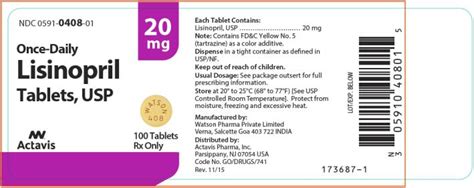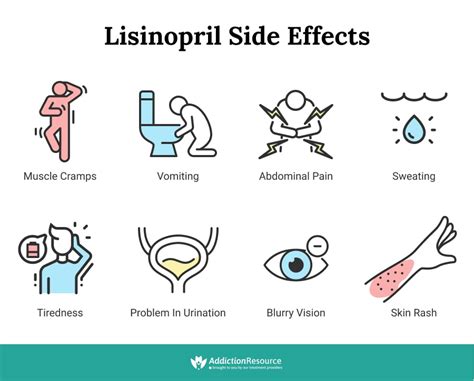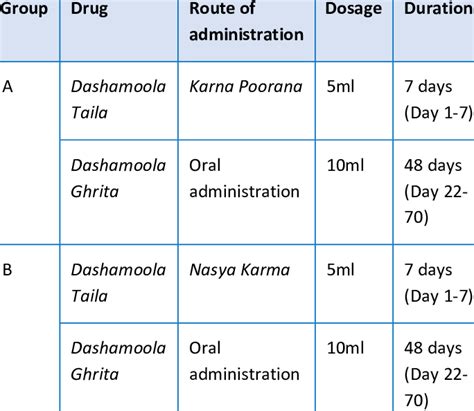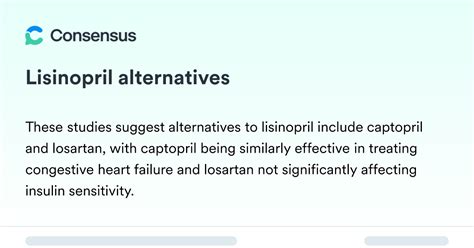Lisinopril is a medication that has been widely used for decades to treat various health conditions, particularly those related to the heart and blood vessels. It is classified as an angiotensin-converting enzyme (ACE) inhibitor, which means it works by blocking the production of a natural chemical that narrows blood vessels, allowing blood to flow more smoothly and the heart to pump more efficiently. Understanding the uses, benefits, and potential side effects of lisinopril is crucial for individuals who have been prescribed this medication or are considering it as a treatment option.
The importance of lisinopril lies in its ability to manage conditions such as high blood pressure (hypertension) and heart failure. High blood pressure is a significant risk factor for heart disease, stroke, and kidney disease, making the management of this condition critical for preventing these complications. Lisinopril, by lowering blood pressure, reduces the strain on the heart and arteries, thereby decreasing the risk of heart attack and stroke. Additionally, for patients with heart failure, lisinopril helps improve the heart's pumping efficiency, reducing symptoms such as shortness of breath and fatigue.
The mechanism of action of lisinopril involves the inhibition of the angiotensin-converting enzyme, a key component in the renin-angiotensin-aldosterone system (RAAS) that regulates blood pressure. By blocking this enzyme, lisinopril prevents the conversion of angiotensin I to angiotensin II, a potent vasoconstrictor. The reduction in angiotensin II levels leads to vasodilation, decreased peripheral resistance, and a subsequent decrease in blood pressure. This action also reduces the amount of aldosterone secreted by the adrenal glands, leading to decreased sodium and water retention, further contributing to the lowering of blood pressure.
How Lisinopril Works
Lisinopril's effectiveness in managing hypertension and heart failure has been well-documented in numerous clinical trials. Its benefits extend beyond just lowering blood pressure; it also has protective effects on the kidneys and can reduce the progression of kidney disease in patients with diabetes. The drug is typically prescribed once daily, and its dosage can vary depending on the condition being treated and the patient's response to the medication. It is essential for patients to follow the prescribed dosage and schedule to achieve optimal results and minimize potential side effects.
Benefits of Lisinopril
The benefits of lisinopril are multifaceted. For patients with high blood pressure, it can significantly reduce the risk of cardiovascular events such as heart attacks and strokes. In patients with heart failure, lisinopril can improve survival rates and reduce the need for hospitalization due to worsening heart failure symptoms. Additionally, its protective effects on the kidneys can slow the progression of kidney disease, particularly in diabetic patients. Lisinopril is also known for its relatively favorable side effect profile compared to other antihypertensive drugs, making it a preferred choice for many patients.
Side Effects of Lisinopril
While generally well-tolerated, lisinopril can cause side effects in some individuals. Common side effects include cough, dizziness, headache, and fatigue. These side effects are usually mild and temporary, resolving on their own or with adjustments in the dosage. However, in rare cases, lisinopril can cause more serious side effects, such as angioedema (swelling of the face, lips, tongue, or throat), which is a medical emergency requiring immediate attention. It is crucial for patients to be aware of these potential side effects and to consult their healthcare provider if they experience any unusual symptoms.
Precautions and Interactions
When taking lisinopril, it is essential to be aware of potential interactions with other medications and certain conditions that may require precautions. Lisinopril can interact with diuretics, increasing the risk of low blood pressure, and with potassium supplements, leading to high levels of potassium in the blood. Patients with kidney disease or diabetes may require closer monitoring while on lisinopril. Additionally, women who are pregnant or plan to become pregnant should discuss the use of lisinopril with their healthcare provider, as it is not recommended during the second and third trimesters due to potential harm to the fetus.
Dosage and Administration
The dosage of lisinopril varies based on the condition being treated. For hypertension, the usual initial dose is 10 mg once daily, with a maximum dose of 40 mg daily. For heart failure, the initial dose is typically 5 mg daily, with gradual increases as needed and tolerated, up to a maximum of 40 mg daily. It is crucial to follow the prescribed dosage and not to stop taking the medication without consulting a healthcare provider, as this can lead to a rebound effect and worsening of the condition.
Long-Term Effects
The long-term effects of lisinopril are generally favorable, with continued benefits in reducing blood pressure and improving outcomes in patients with heart failure. However, long-term use requires regular monitoring of kidney function and potassium levels to prevent potential complications. Additionally, patients should be aware of the potential for increased sensitivity to the sun and should take precautions to avoid excessive sun exposure.
Alternatives to Lisinopril
For patients who cannot tolerate lisinopril due to side effects or other reasons, there are alternative treatments available. Other ACE inhibitors, such as enalapril or captopril, may be considered. Alternatively, angiotensin II receptor blockers (ARBs), calcium channel blockers, or beta-blockers may be prescribed, depending on the patient's specific condition and medical history. The choice of alternative medication should be made in consultation with a healthcare provider, taking into account the individual's health status and the potential benefits and risks of each option.
Conclusion and Future Directions
In conclusion, lisinopril is a valuable medication in the management of hypertension and heart failure, offering significant benefits in reducing the risk of cardiovascular events and improving patient outcomes. While it is generally well-tolerated, awareness of potential side effects and interactions is crucial for safe use. As research continues to evolve, it is likely that new applications and combinations of lisinopril with other medications will emerge, further expanding its therapeutic potential. Patients should work closely with their healthcare providers to optimize the use of lisinopril and address any concerns or questions they may have about their treatment.
We invite you to share your experiences or ask questions about lisinopril in the comments below. If you found this information helpful, please consider sharing it with others who may benefit from understanding more about this important medication.
What is lisinopril used for?
+
Lisinopril is primarily used to treat high blood pressure (hypertension) and heart failure. It is also used to protect the kidneys from damage due to diabetes.
How does lisinopril work?
+
Lisinopril works by blocking the production of angiotensin II, a chemical that narrows blood vessels, allowing blood vessels to widen, which improves blood flow and lowers blood pressure.
What are the common side effects of lisinopril?
+
Common side effects include cough, dizziness, headache, and fatigue. Less common but serious side effects include angioedema and high levels of potassium in the blood.








